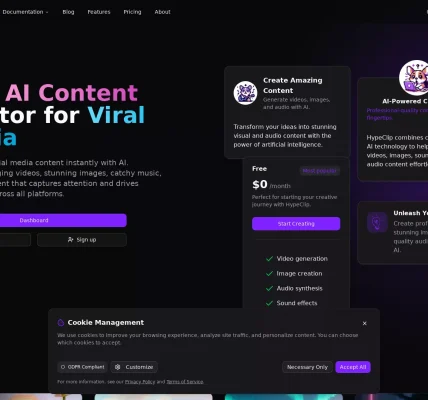Marketing never stands still—it’s like a river, constantly shifting and carving new paths. And by 2025, the landscape will look wildly different from what we see today. Here’s the deal: if you want to stay ahead, you’ve got to know where the currents are heading. Let’s dive into the trends that’ll shape the next wave of marketing.
1. AI-Powered Hyper-Personalization
Sure, personalization isn’t new. But in 2025, it won’t just be about slapping a name on an email. AI will analyze behavior, predict needs, and craft experiences so tailored they’ll feel like mind-reading. Imagine a coffee brand suggesting your favorite blend before you even realize you’re out. That’s the level we’re talking about.
Why it matters: Consumers are drowning in generic content. Hyper-personalization cuts through the noise—like a barista who remembers your order without asking.
2. Voice Search Optimization (VSO)
“Hey Siri, find me the best marketing trends for 2025.” Voice search is exploding, and by 2025, over 50% of searches will be voice-driven. The catch? People don’t speak like they type. Long-tail, conversational keywords will dominate. Think less “best shoes” and more “where can I buy comfortable running shoes near me?”
Quick tip: Optimize for questions. FAQ pages will become your secret weapon.
3. Sustainability as a Selling Point
Green isn’t just a color—it’s a currency. Consumers, especially Gen Z and Millennials, will demand proof of sustainability. Not just vague claims, either. Think carbon-neutral shipping, upcycled materials, and transparent supply chains. Brands that fake it? They’ll be called out faster than you can say “greenwashing.”
Stats to note: 73% of consumers say they’d switch brands if one offered a more sustainable option.
4. Short-Form Video Dominance
TikTok wasn’t a fluke. Short, snackable videos will continue to rule—especially as attention spans shrink. But here’s the twist: platforms will blur. Instagram Reels, YouTube Shorts, and even LinkedIn videos will compete for eyeballs. The winners? Brands that tell stories in under 15 seconds.
Pro move: Behind-the-scenes clips and user-generated content will outperform polished ads.
5. The Rise of “De-Influencing”
Oddly enough, influencers are losing influence. Consumers are wary of paid promotions and crave authenticity. Enter “de-influencers”—people who call out overhyped products or suggest cheaper alternatives. Brands will need to pivot toward micro-influencers and real, unfiltered testimonials.
Example: A skincare brand partnering with dermatologists instead of celebrities.
6. Augmented Reality (AR) Shopping
Try before you buy—without leaving your couch. AR will let shoppers visualize furniture in their homes, “try on” makeup, or even test-drive virtual cars. IKEA’s AR app is just the start. By 2025, this won’t be a luxury; it’ll be expected.
Fun fact: 71% of shoppers say they’d shop more often if AR was available.
7. Community-Driven Marketing
Forget one-way broadcasts. Brands will build communities—think Discord channels, branded subreddits, or even IRL meetups. The goal? Turn customers into collaborators. Lego’s fan-designed sets and Glossier’s cult-like following are early blueprints.
Key takeaway: Loyalty isn’t bought; it’s nurtured.
8. Privacy-First Data Strategies
Cookies are crumbling, and tracking is getting tougher. Marketers will need first-party data—email lists, surveys, loyalty programs—to survive. The upside? Better relationships with customers who choose to share their info.
Warning: Those relying on third-party data? They’re playing Jenga with half the blocks missing.
9. Interactive Content
Quizzes, polls, 360-degree videos—content you can touch (figuratively, at least). Passive scrolling is dying. Interactive stuff boosts engagement and makes brands memorable. Ever taken a “Which Friends character are you?” quiz? That’s the energy we’re channeling.
Try this: A skincare brand asking, “What’s your stress level today?” before recommending products.
10. B2B Gets Human
B2B marketing used to be… well, boring. Not anymore. In 2025, even the driest industries will embrace storytelling, humor, and emotion. LinkedIn posts will feel more like coffee chats than sales pitches. Why? Because buyers are people first, decision-makers second.
Example: A SaaS company using memes to explain cybersecurity.
Wrapping Up
The future of marketing isn’t about chasing shiny objects—it’s about depth, connection, and adapting to how people actually behave. The brands that thrive will be the ones treating customers like humans, not data points. And honestly? That’s a trend worth betting on.










